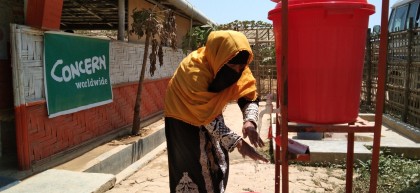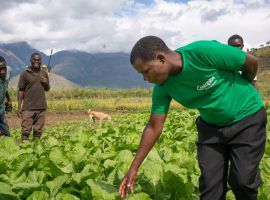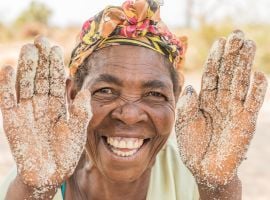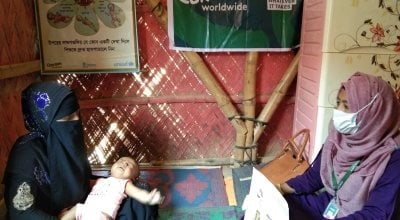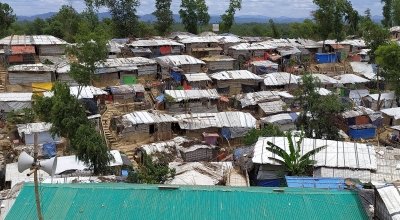
Knowledge Hub
Afghanistan and Covid-19: what’s the situation?
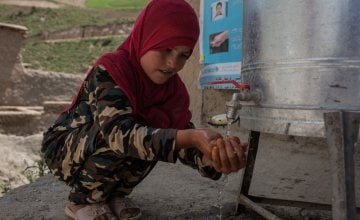
Coronavirus (Covid-19) is spreading in the world’s most vulnerable communities. Despite a number of improvements in recent years, Afghanistan remains an extremely volatile and fragile country following almost four decades of instability. The pandemic comes at a time when the country is grappling with deadly conflict, mass displacement, and a dire economy that has plunged over 80 percent of the population below the poverty line.
As Covid-19 cases increase in Afghanistan, many lives are at stake: but what exactly is the situation?
Afghanistan is a landlocked country located in the heart of central Asia, with Pakistan to the east and Iran to the west. Afghanistan’s natural landscape is diverse, from vast mountain ranges to lakes to dry deserts. It has a population of around 37 million people, with many Afghans living in the fertile valleys between the mountains.
Afghanistan has had a long history of instability and conflict, leaving millions of Afghans internally displaced today.
Crisis on top of crises
Such difficult conditions, coupled with years of instability forcing millions from their homes makes life in Afghanistan extremely hard. As such, today Afghanistan faces one of the most complex humanitarian crises in the world. Various environmental factors combined with a precarious security situation pose significant challenges to the Afghan people.
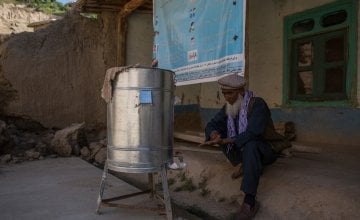
Decades of war and violent conflict compounded by economic problems and natural disasters have caused 2.2 million Afghans to become internally displaced. Those forced to flee their homes face serious challenges, including protection risks, the absence of basic shelter and limited access to public services and social protections and loss of income. Moreover, many IDPs live in camps or informal sites where overcrowding, poor nutrition, and inadequate provision of water, sanitation and hygiene make preventing the spread of disease extremely difficult.
As a result, the arrival of Covid-19 in Afghanistan is a crisis on top of crises.
The pandemic has had tremendous repercussions on even the most developed countries, so you can only imagine the toll it has taken on a country already grappling with one of the most complex, longstanding humanitarian crises in the world. It is difficult to sum up the reality on the ground―conflict is escalating, food insecurity is worsening, public institutions and services are stretched to their limits, and development efforts are quickly being reversed. Families are struggling to earn a living, with prolonged lockdowns intensifying financial shocks.
Covid-19 and IDPs
Imagine having to leave everything behind to keep your family safe, only to face a new deadly threat: Covid-19. This is the reality for people living in makeshift tents without running water in places like Afghanistan.
During the pandemic, everyone's economic situation has suffered. However, families who have been forcibly displaced by conflict or disasters―they are the ones who are struggling the most. Lockdowns have prevented displaced families from finding any form of temporary employment; we are expecting to see serious escalations in dangerous child labour and early marriages. As a country, we are really struggling.
Refugees and displaced people are extremely vulnerable to the virus. Basic handwashing facilities are often either unavailable or shared between many people. These camps are often temporary or unrecognised as permanent settlements by governments and are therefore not served by a local hospital. They also suffer high levels of chronic ill health due to hardship and malnutrition. Consequently, without sufficient medical care, the mortality rate of the virus could be higher in these settings than elsewhere.
Concern’s response
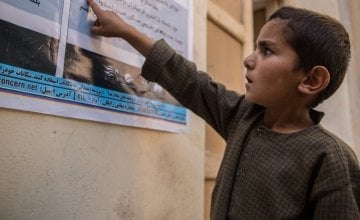
In Afghanistan, we are responding by:
- Emergency food distributions in response to increased food insecurity due to Covid-19.
- Re-allocating funding to acquire and install handwashing facilities in our areas of operation.
- Distributing hygiene materials, such as soap and paper towels.
- Conducting hygiene awareness campaigns tailored to Covid-19.
In addition, Concern has implemented mitigations measures in order to ensure that its existing programmes can continue to the extent possible during the pandemic. These include minimising the number of people to 15 people per training for activities requiring group trainings in order to promote social distancing.
On the tireless efforts of Concern staff in Afghanistan, Jaclyn Dolski added:
Afghans are and continue to be incredibly strong, resilient people. In addition to insecurity, our team is now facing an entirely new threat―one that exists 24 hours of the day, every day. Despite the added risks, they are committed to continuing Concern’s work, implementing lifesaving development and emergency programmes adapted to the context of Covid-19.
This includes providing access to clean water and hygiene materials, emergency food support, and safe shelter, with special attention towards populations affected and displaced by conflict or natural disasters.
They are really doing everything they can to protect and support their country during a time of exceptional hardship, fear, and a multitude of unknowns.
This week, the Disasters Emergency Committee launched an appeal to help protect the poorest and most vulnerable communities living in refugee and internal displacement camps in the world’s most fragile places.
Whilst we are already on the ground in Afghanistan, donations to this appeal will allow this vital work to be scaled up, helping prevent countless cases and save lives.
